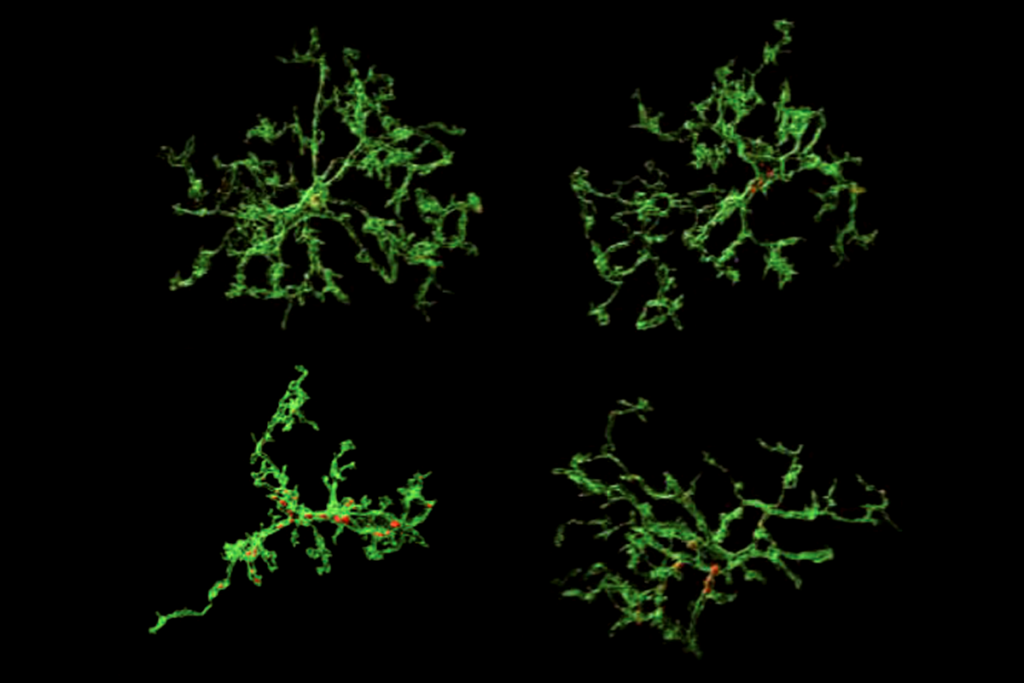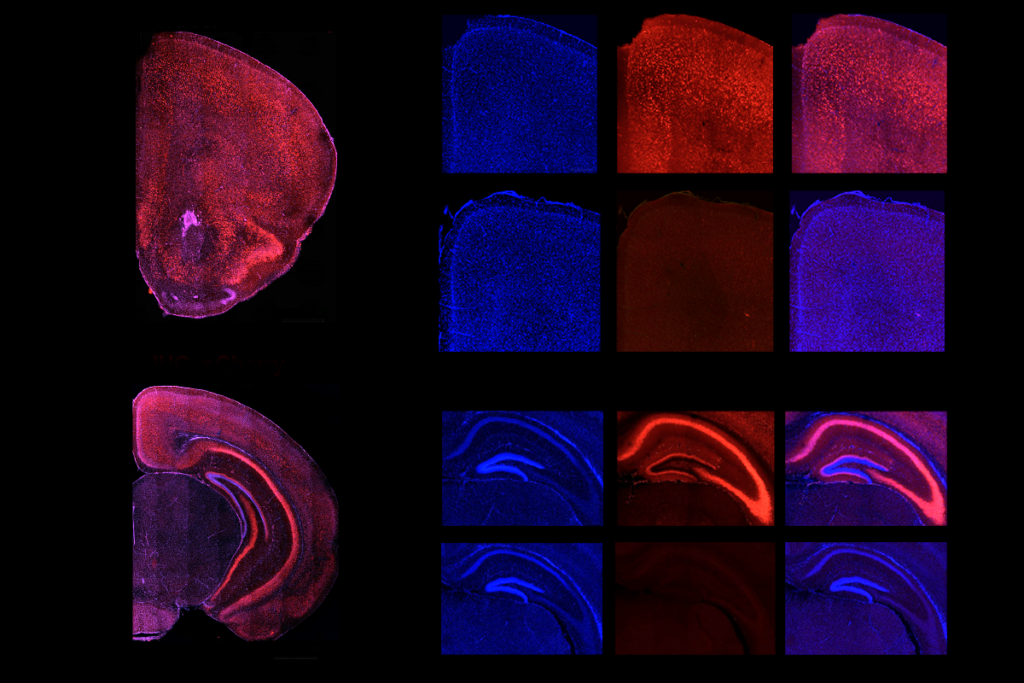Subset of Rett gene’s targets may lead to the disorder
Deleting the Rett syndrome gene in a subset of neurons, instead of throughout the body, dramatically lowers the number of genes that are dysregulated in those neurons, according to results presented in a poster session Saturday at the 2011 Society for Neuroscience annual meeting in Washington, D.C.
- Fluorescent tool: Researchers can target a ribosomal subunit (green) to specific neurons in the brain to look at gene expression.
Deleting the Rett syndrome gene in a subset of neurons, instead of throughout the body, dramatically reduces the number of genes that are dysregulated in these neurons, according to results presented in a poster session Saturday at the 2011 Society for Neuroscience annual meeting in Washington, D.C.
This approach can help to identify the pathways that underlie Rett syndrome, an autism-related neurological disorder, the researchers say.
Rett syndrome is caused by a mutation in the MeCP2 gene. Because MeCP2 influences the expression of thousands of genes, however, researchers have been unable to pinpoint a single neurological pathway that might lead to the syndrome.
“We need to get a better handle on how this transcriptional modulator that sits everywhere [on the genome] causes such a defined syndrome,” says Hsiao-Tuan Chao, a researcher in the laboratory of Huda Zoghbi who presented the poster.
Last year, Zoghbi’s team published a mouse model of Rett syndrome that shifted the field’s perception of the syndrome: Deleting MeCP2 in only a subset of neurons in mice reproduces nearly all the features of the disorder, the researchers found1.
This subset of neurons inhibit signals in the brain and express the chemical messenger gamma-aminobutyric acid, or GABA. Several studies have implicated GABA interneurons in autism.
Fine tuned:
In the new study, researchers compared mice lacking MeCP2 only in GABA neurons with those missing the gene throughout the body.
The researchers first induced mice to express a subunit of the ribosome — which assembles proteins from the genetic messages that code for them — specifically in GABA neurons.
They then removed the mouse cortex, a brain region responsible for higher-order cognitive function, and fished out this subunit — along with all the gene messages that the ribosome was translating.
In the GABA neurons of the cortex, mice missing MeCP2 throughout the body and those that lack the protein only in GABA cells both express numerous genes at atypical levels — either higher or lower levels than in controls, the researchers found. But only about 10 to 12 percent of these abnormal expression levels are shared between the two models, the researchers found.
The differences in gene expression between the two mouse models could be because signals transmitted by neighboring neurons can influence gene expression of GABA neurons, the researchers say.
Because the loss of MeCP2 in only GABA cells is sufficient to lead to most of the symptoms of Rett syndrome, this subset of genes may be important in the syndrome, they add.
“There are still wide numbers of genes that are being changed,” says Chao. “But there is evidence that just a few sets of genes or pathways are key for what is happening.”
Although the results are preliminary, they are leading researchers to some interesting gene candidates. For example, MEF2C, an autism candidate gene, is dysregulated in the GABA-specific mice, but not in mice lacking MeCP2 throughout the body, the study found.
The researchers are analyzing their data to identify whether the subset of genes dysregulated in the GABA-specific mice map to specific pathways.
The approach will also allow researchers to see the effect of deleting MeCP2 from GABA cells on neighboring cells or at different stages in development.
“We can continue to dissect this further,” says Chao. “We can ask what’s happening in excitatory cells, what’s happening in different layers of the brain and what’s happening in different time windows.”
For more reports from the 2011 Society for Neuroscience annual meeting, please click here.
References:
1: Chao H.T. et al. Nature 468, 263-269 (2010) PubMed
Recommended reading

Constellation of studies charts brain development, offers ‘dramatic revision’

Functional connectivity links with autism, not ADHD; and more

Ramping up cortical activity in early life sparks autism-like behaviors in mice
Explore more from The Transmitter

‘How to Change a Memory: One Neuroscientist’s Quest to Alter the Past,’ an excerpt
